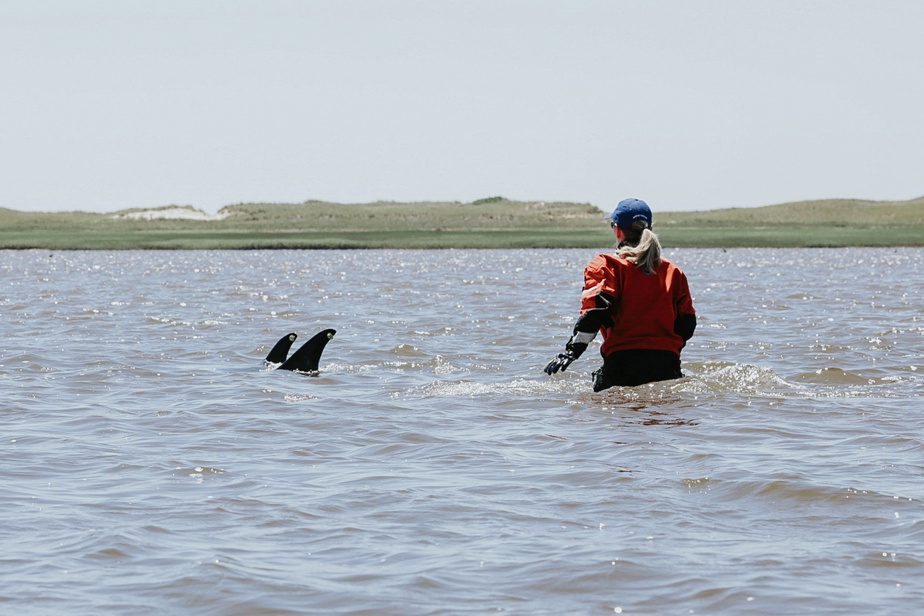
Rescuers who helped free more than a hundred dolphins off the coast of Cape Cod confirmed the mass stranding, which began on June 28, was the largest involving dolphins in US history.
Two previous incidents were recorded in Hawaii and the Florida Keys, where dolphin species were observed circling in shallow water, but the Cape Cod event represents the largest number of stranded dolphins in a single incident, according to the International Fund for Animal Welfare. Helped on the way to the rescue.
A review of data and aerial images this week showed a total of 146 dolphins involved in strandings, said Stacey Hedman, the international fund's director of communications.
The group estimates that 102 dolphins survived the multi-day event. 37 natural deaths occurred and seven dolphins had to be euthanized.
Small-scale response efforts continued, including the rescue, relocation, and release of nine of the same Atlantic white-sided dolphins on July 2.
That day, 11 dolphins were spotted alone near Powers Landing in Wellfleet, Massachusetts. Two were euthanized and nine were transported in a custom-built mobile dolphin rescue clinic vehicle, where veterinarians and biologists can administer fluids and other treatments while venturing into deeper water, the director said.
In this case, she said, the dolphins were released near Herring Cove Beach in Provincetown. Satellite tags have tracked many of these animals safely offshore.
There is no specific reason why dolphins become solitary.

Photo handout, Agence France-Presse
A rescuer tries to direct dolphins to avoid entanglement on June 28.
Rescuers faced several challenges while trying to guide the dolphins into open water, including difficult muddy conditions and the dolphins being scattered over a large area.
During some rescue efforts, workers started on foot, pulled the creatures into deep water, and then used small boats equipped with loud acoustic alarms to lure the creatures.
A number of dolphins died at Gut – or Great Island – in Wellfleet near the Herring River. The gut is often the site of filaments, experts say, due to its hook shape and extreme undulations.
“This stranding required a significant effort over several days from our staff, volunteers and partners,” said Stacey Hedman, adding that with a survival rate of about 70%, the group considers the response a success.
The organization also received reports from whale-watching vessels that saw some dolphins identified by temporary markers – now swimming among pods of hundreds of other dolphins that were not part of the stranding.
More than 25 international animal rescue staff members and 100 trained volunteers contributed to the entire rescue effort. The team also received support from Whale and Dolphin Conservation, the Center for Coastal Studies, AmeriCorps of Cape Cod and the New England Aquarium.





